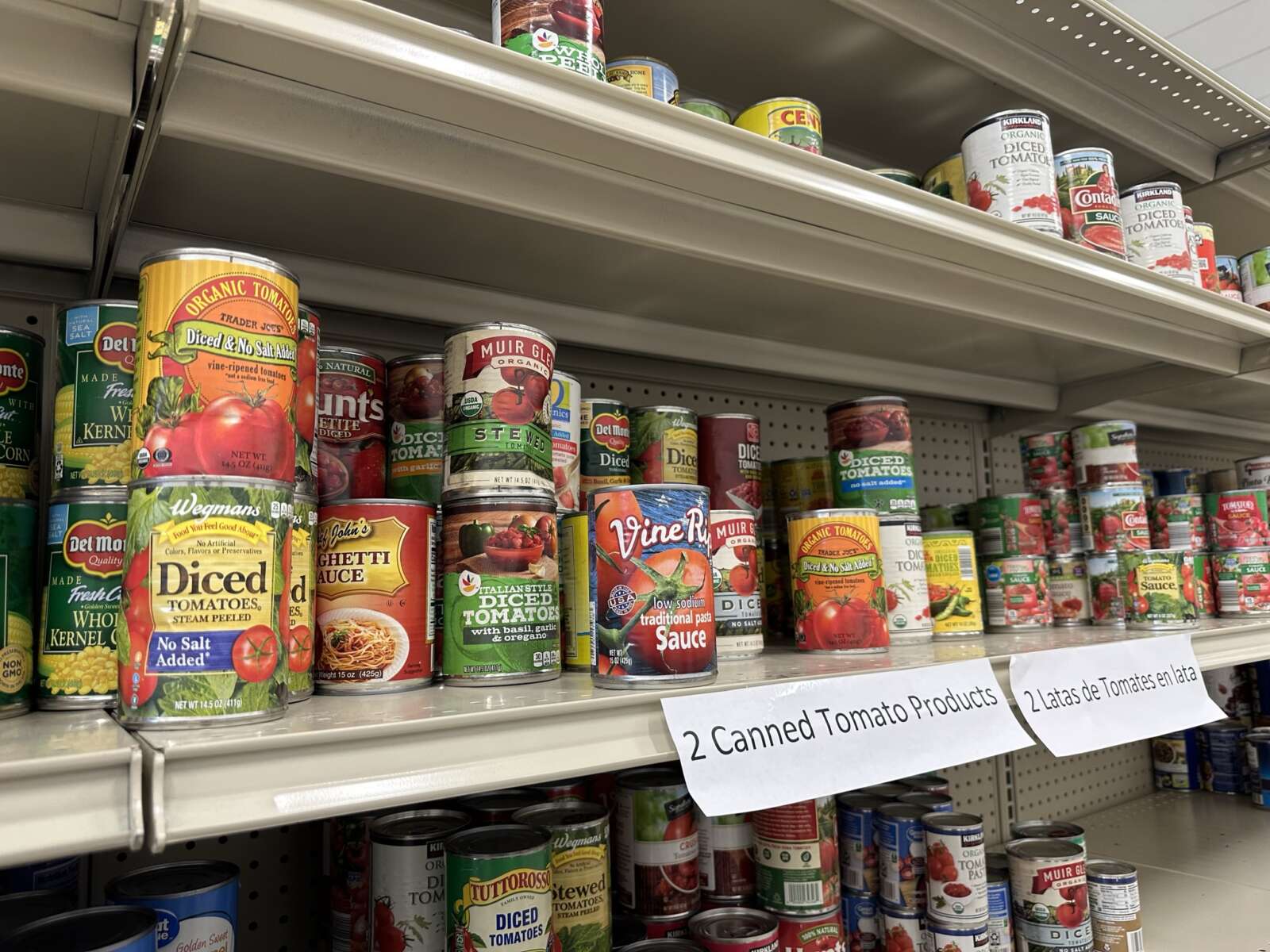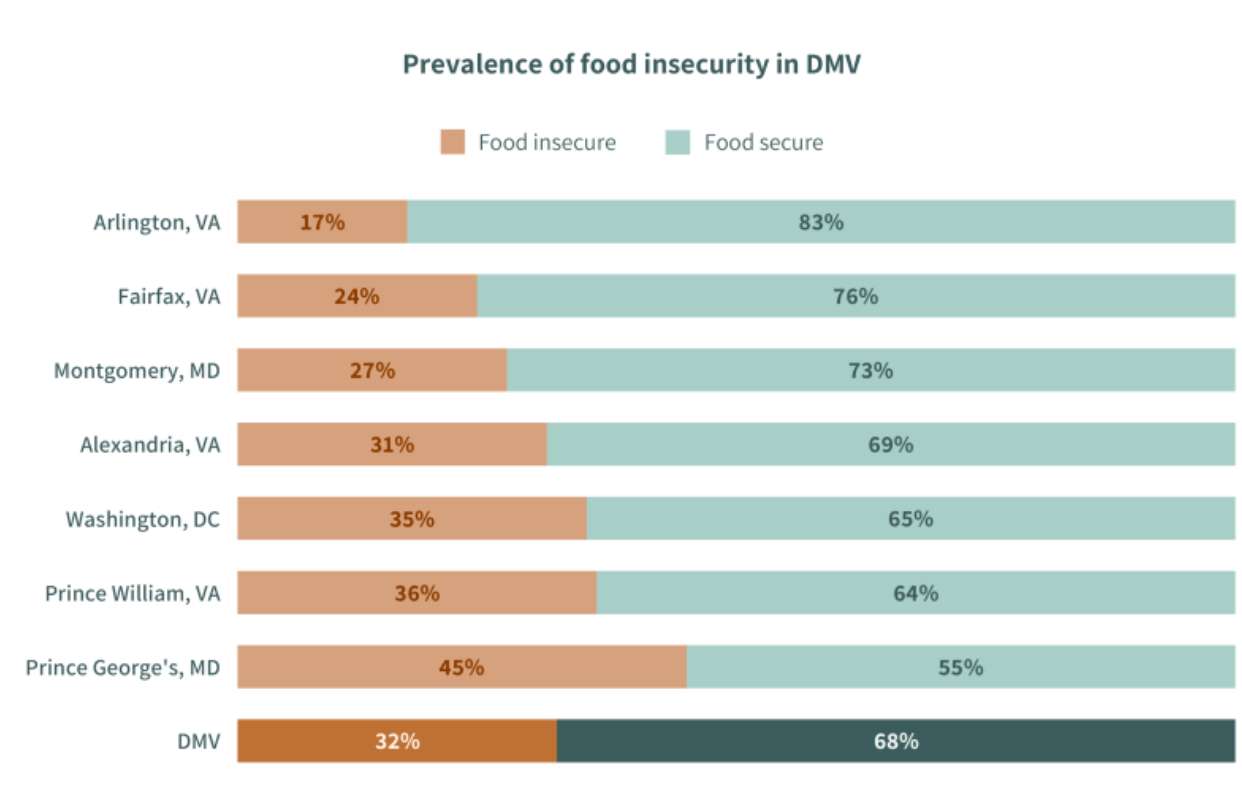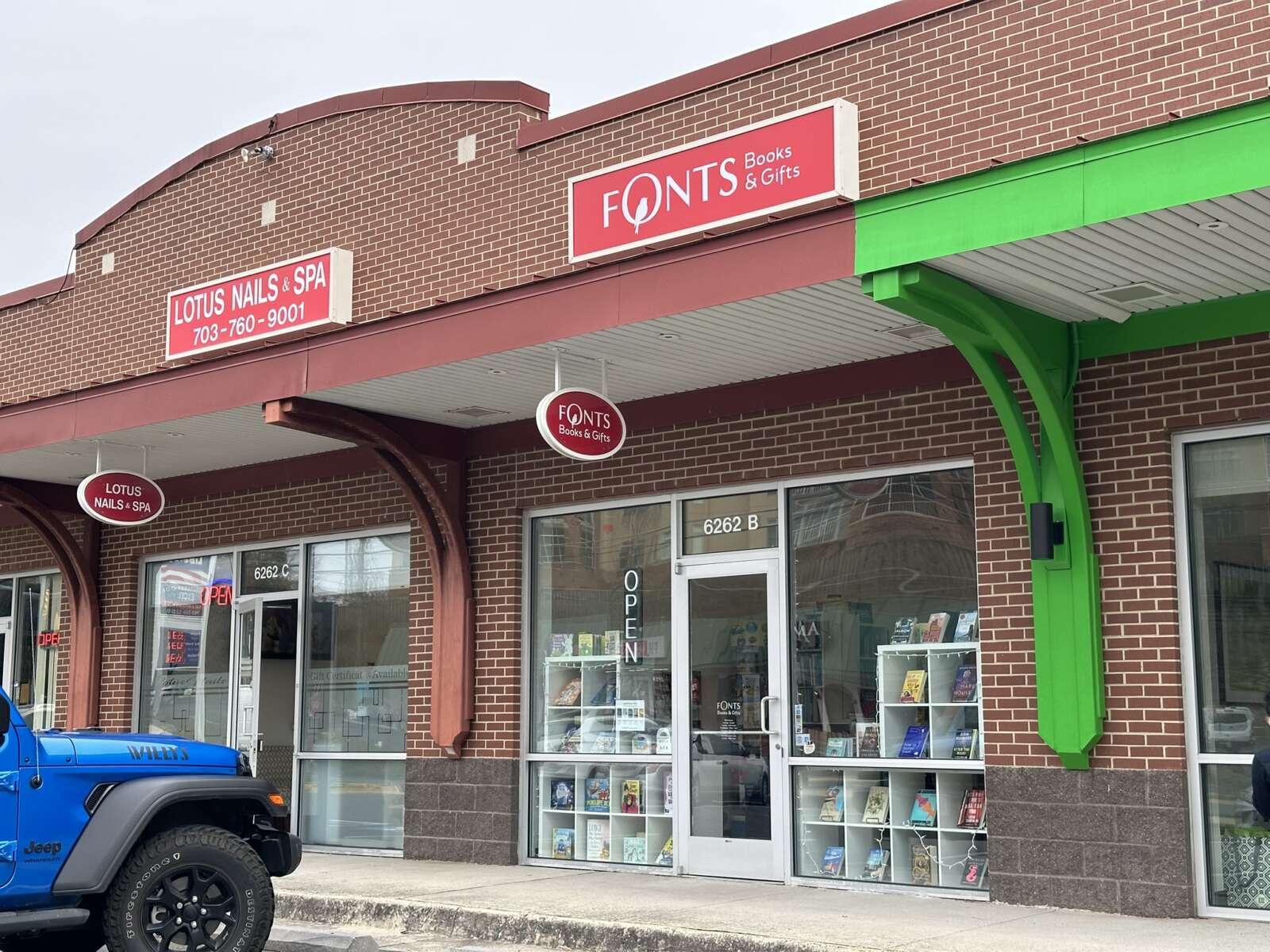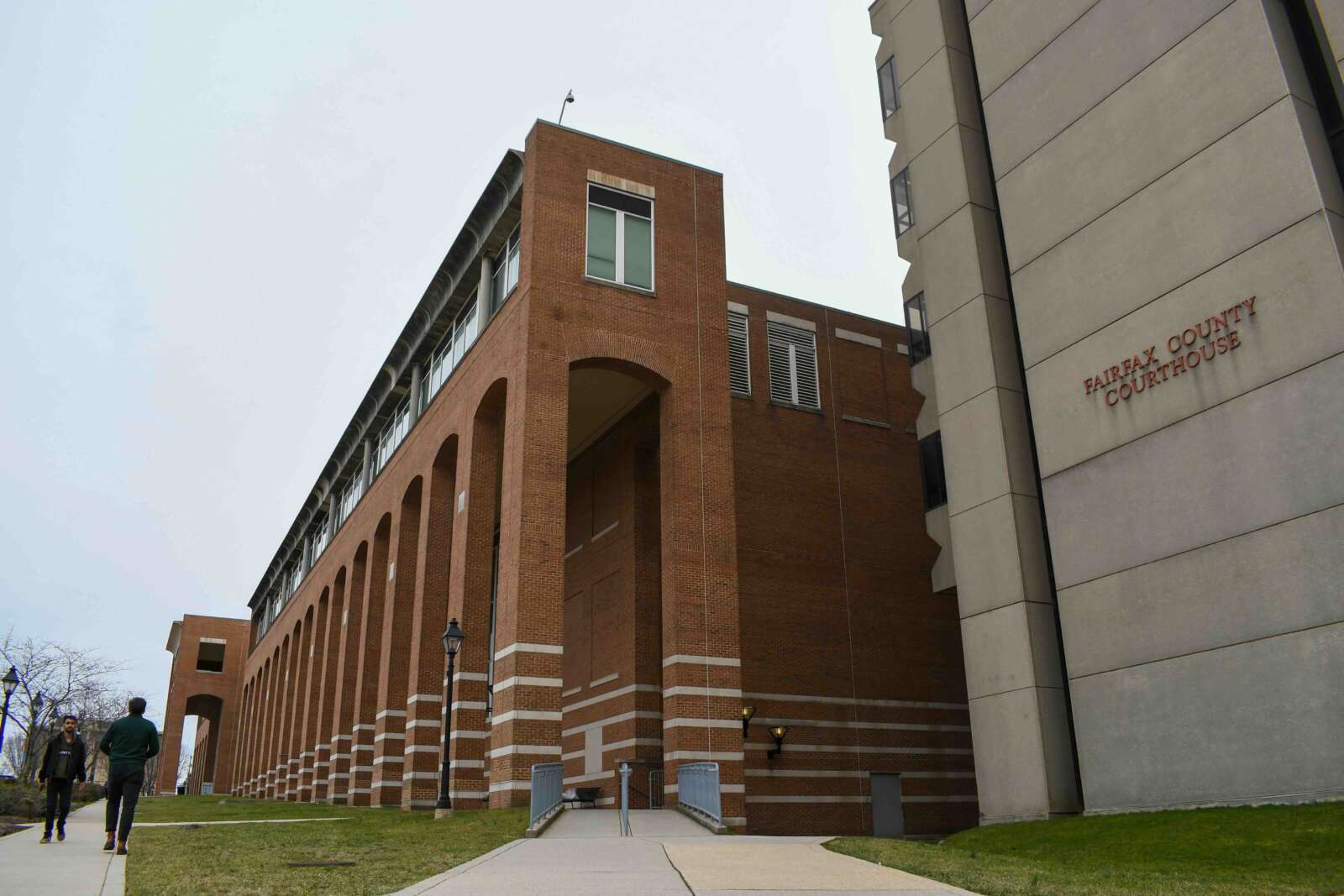
Finding sufficient, quality food remains a challenge for many people across the D.C. area, even with the immediate economic disruptions triggered by the pandemic in the rear view mirror, the Capital Area Food Bank (CAFB) says in a new report.
Released last month, the nonprofit’s 2023 Hunger Report found that the region is still seeing elevated levels of food insecurity that are nearly identical to what was reported a year earlier. In Fairfax County, 24% of residents are food insecure — the exact same percentage as in 2022.
CAFB didn’t start issuing its annual hunger reports until 2020, making a direct comparison to pre-pandemic years difficult, but the amount of food it distributes in the county has risen from 5.2 million meals in 2019 to almost 7.2 million this year, as of mid-September, indicating more need. Meal distributions peaked at more than 9 million in 2022.
“While signs of improvement seem to be everywhere in our economy over the past twelve months, there’s a far different story unfolding for over a million of our neighbors,” CAFB president and CEO Radha Muthiah said. “This year’s Hunger Report makes clear that food insecurity and economic inequity are still enormous problems in our area.”
Overall, about 32% of D.C. area residents are food insecure, including 18% who are severely food insecure, according to the 2023 Hunger Report, which is based on data collected between May 2022 and April 2023.
The only surveyed jurisdiction with less food insecurity than Fairfax County was Arlington, where 17% of households struggle to find food — a decline from 21% in 2022. Prince George’s County had the highest rate at 45%.

Other notable findings from CAFB:
- Food insecurity is more prevalent among Black (47%) and Hispanic (52%) respondents than white respondents (14%)
- About 82% of food-insecure households are low-income, which is defined as earning $83,000 a year or less, but 1 in 5 families who earn the area’s median income of $120,000 still experience food insecurity
- 76% of food-insecure individuals are employed — a higher rate than the one for food-secure individuals (73%)
- 10% of children are experiencing food insecurity, a lower rate than the general population that the report attributes to parents prioritizing feeding their kids over themselves and access to school meals
The lack of improvement in the region’s food insecurity levels, despite signs of a strong recovery for the U.S. economy, reflects “the pandemic’s ongoing impacts on employment, high rates of inflation, and the rollback of…government assistance programs,” such as the emergency Supplemental Nutrition Assistance Program (SNAP) benefits that ended in March, the 2023 Hunger Report says.
According to the report, 52% of all respondents reported feeling the impacts of high food costs, which rose 20% between May 2020 and this past May, but the impact was more widespread among food-insecure households, particularly low-income, Black and Hispanic households.
To address food insecurity, the report urges providers like CAFB to increase access to food assistance. It also recommends government support for public programs like SNAP — which is funded by a farm bill that expired at the end of September — and better coordination between social services intended to alleviate poverty.
“Every sector in our region has a role to play in addressing this ongoing crisis, both in the short and longer term, to create more opportunity and brighter futures for our community,” Muthiah said.
Over the past two years, Fairfax County has distributed $9.5 million in relief funds from the American Rescue Plan Act to support community food providers, including $4 million that will be allocated this fall, according to Ramona Carroll, equity manager for the county’s Department of Neighborhood and Community Services.
The county also devotes over $1 million annually to nonprofits that provide emergency food assistance through its Consolidated Community Funding Pool (CCFP), which provides funding for nonprofit and community human services organizations through an annual, competitive process.
In addition, the county began accepting applications last month for an economic mobility pilot that will give eligible families monthly payments of $750 for 15 months. Initial data from similar basic income programs that have cropped up around the country, including in Alexandria City, suggest they can help people afford housing, food and other basic needs.
For community members who want to assist those experiencing food insecurity, Carroll recommends donating to local food providers and the county’s annual Stuff the Bus campaign. She also recommends that organizations consider applying for the community funding pool.
“The funding allocated to organizations through the CCFP serves as an investment and catalyst for strengthening the human services network of programs available for Fairfax County residents,” Carroll said.
Recent Stories

The Gillion Academy’s Home School Basketball Program begins Fall 2024 for 7th – 12th Grade student-athletes to complete their online academic studies in a supervised and focused setting while receiving elite training from our professional basketball trainers at The Gillion Basketball Academy, a state of the art training facility in Springfield, Va. We have developed over 200 college athletes and placed over 50 players in the NBA and pro leagues overseas and provide the same level of training for our student-athletes.
We will have a virtual Open House Zoom on May 6th at 7:30PM so please go to our website to learn more about us and to fill out an interest form and register for the event and learn about the top training facility in the DMV area.
Any questions please email our Director at philip.budwick@gil-lionbasketballacademy.com.

For many remote workers, a messy home is distracting.
You’re getting pulled into meetings, and your unread emails keep ticking up. But you can’t focus because pet hair tumbleweeds keep floating across the floor, your desk has a fine layer of dust and you keep your video off in meetings so no one sees the chaos behind you.
It’s no secret a dirty home is distracting and even adds stress to your life. And who has the energy to clean after work? That’s why it’s smart to enlist the help of professionals, like Well-Paid Maids.
Pedal with Petals Family Bike Ride
Join us on Saturday, May 11th and ride into spring during our Pedal with Petals Family Bike Ride. Back for its second year, Pedal with Petals is going to be bigger than ever. This year’s event will include both an
Encore Creativity for Older Adults at Capital One Hall
Encore Creativity for Older Adults is pleased to raise the curtain and welcome community members to its spring concert at Capital One Hall in Tysons, VA on May 4, 2024. The concert, which starts at 3 PM, will bring hundreds







